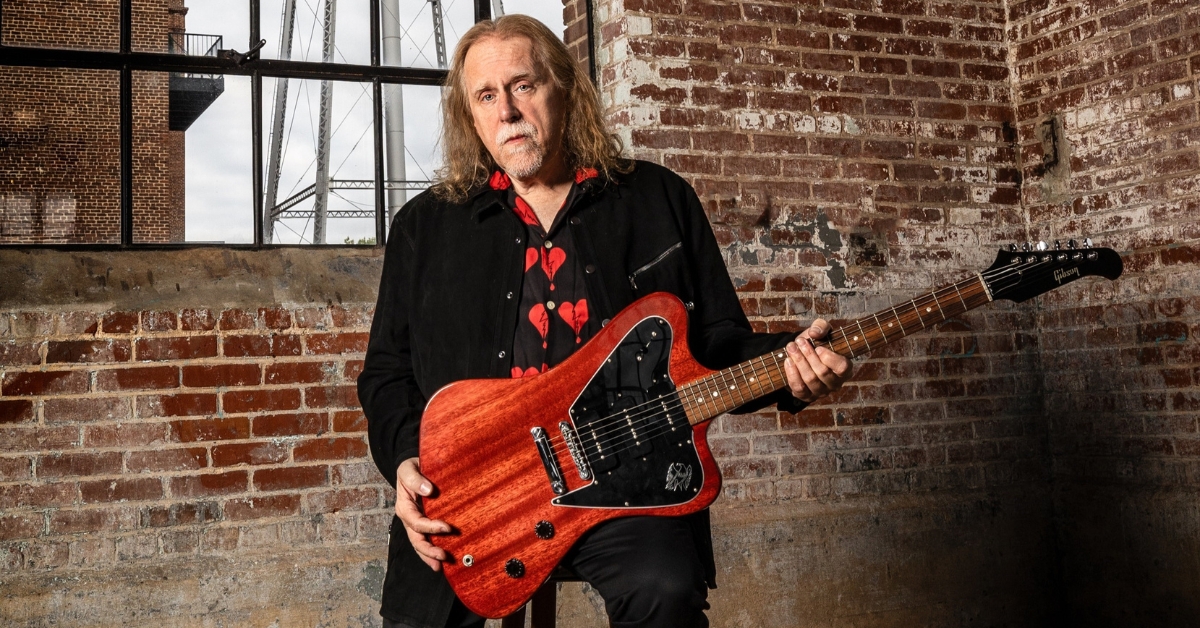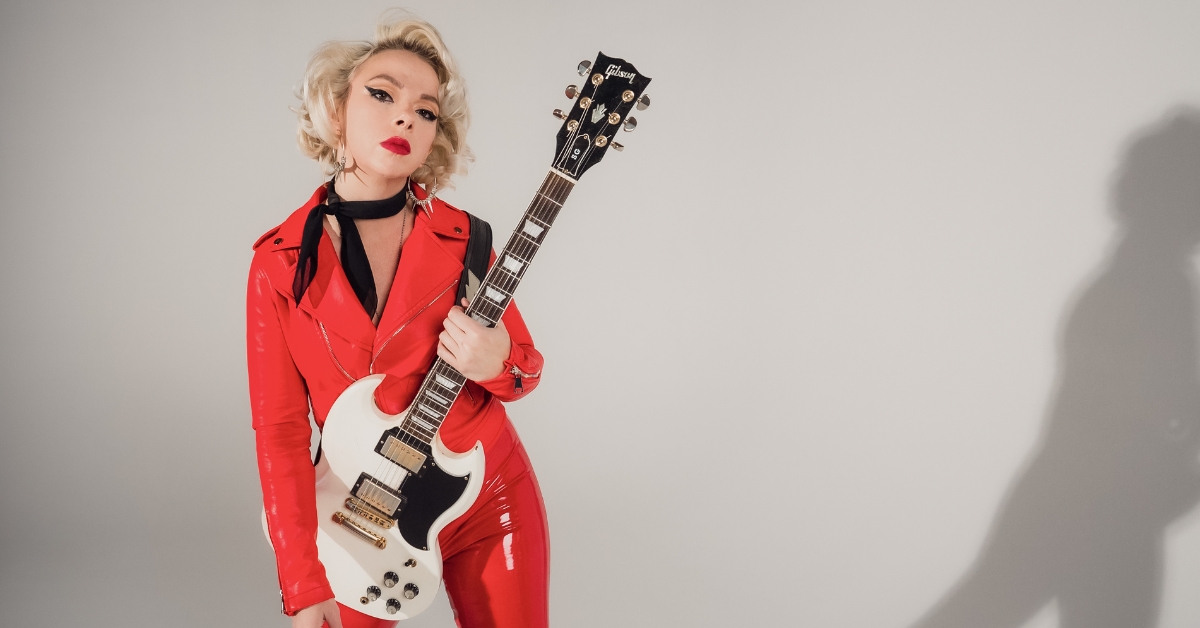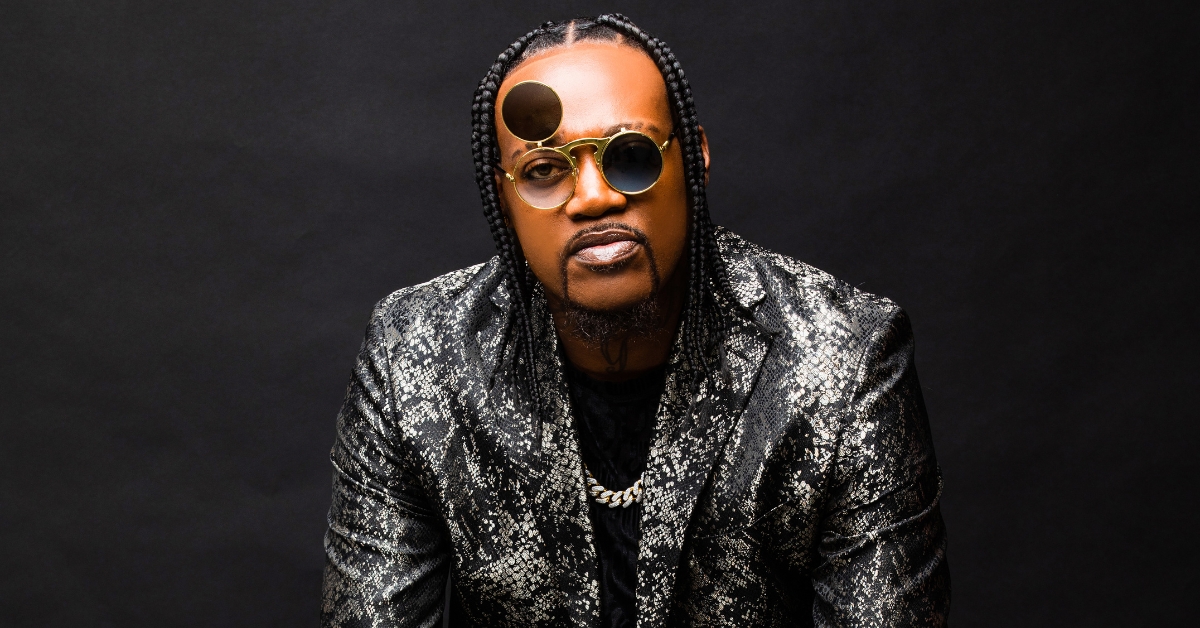A great cover takes something old and makes it new again. This is the philosophy behind Slash’s new album, Orgy of the Damned, a collection of 12 dynamic songs that shakes up and revitalizes blues classics with a stripped down, instinctive approach. Working in a similar way to his 2010 self-titled solo LP Slash, which featured multiple guest vocalists, the acclaimed guitarist teamed up with numerous musicians and singers to create a singular expression that pays homage to the blues. By celebrating both well-known and largely undiscovered songs, Slash offers a nostalgic nod to the past while reinvigorating the songs with his inimitable guitar playing and the spirit of collaboration.
Although he grew up in England, Slash’s American grandmother turned him on to the blues early on and he was immediately taken with B.B. King. At the same time, his parents raised him on a healthy diet of ‘60s British rock ‘n’ roll, from The Who to The Kinks. Once he moved to Laurel Canyon, Slash found himself surrounded by rock and folk singers like Joni Mitchell, Crosby, Stills & Nash, and Neil Young—all of whom eventually inspired his playing and songwriting. It wasn’t until he began playing guitar himself that Slash realized all of his favorite musicians had been influenced by the same B.B. King records he’d listened to as a young kid, an oddly full circle moment. Although Slash explored the genre for years, it wasn’t until the mid-‘90s that he helmed blues rock outfit Slash’s Blues Ball, which toured but never released any music.
“It was really just a drunken cover band,” Slash recalls. “We used to jam, and it was a lot of fun. I’ve kept in touch with the guys over the years. A few years ago, I was between Guns N’ Roses tours, so I called them up and said, ‘Hey, let’s go into the studio and put some of these songs together.’ I love blues music, but I haven’t really done the blues thing because I was always so busy with something else. All these years later, I decided to finally do it.”
Slash reunited with two of his former Blues Ball bandmates, bassist Johnny Griparic and keyboardist Teddy Andreadis, and enlisted drummer Michael Jerome and singer/guitarist Tash Neal. The group went into a rehearsal room in North Hollywood and began hashing out soulful, rollicking takes on classic songs. Some of the songs, like Steppenwolf’s “The Pusher,” Charlie Segar’s “Key to the Highway” and Albert King’s “Born Under a Bad Sign,” had been performed by Slash’s Blues Ball on tour in the ‘90s, while others, like Stevie Wonder’s “Living for the City,” were long-time favorites for Slash.
“It was a very spontaneous thing,” Slash says. “We just threw it together. There was no researching or trying to find the right tracks—these are just songs I like. I wanted to approach the music in the way I always play. These are my interpretations. With some of the songs we changed the arrangement entirely because it was how we wanted to hear it played. The beauty of improvising and not overthinking is that something interesting or unexpected can come out of it.”
After jamming together for a few weeks, the group recorded the instrumental tracks over a week in the spring of 2023 at East West Studios and Snakepit Studio in LA which saw Slash reteaming with storied producer Mike Clink. Everything was played live in the room, with an emphasis on improvisation. That approach resulted in dynamic, energized songs that feel immediate, raw and distinctly familiar. In the months that followed, Slash enlisted and recorded the album’s diverse guest vocalists, who include Gary Clark Jr, Billy F. Gibbons, Chris Stapleton, Dorothy, Iggy Pop, Paul Rodgers, Demi Lovato, Brian Johnson, Tash Neal, Chris Robinson, and Beth Hart.
“That was the one thing I wanted to do differently from what we’d done as Blues Ball,” Slash explains. “I thought it would be cool to get some people I know who were appropriate for each song, like I did on my self-titled album in 2010. That was really a cool project, and this turned out similarly cool.”
The album enthusiastically encompasses a broad range of styles within the blues genre, veering from an upbeat, rowdy take on Robert Johnson’s “Crossroads” to a plaintive, twanging rendition of T. Bone Walker’s “Stormy Monday.” “Hoochie Coochie Man,” written by Willie Dixon, and made famous by Muddy Waters in 1954, showcases the in-the-moment nature and unrestrained energy of Orgy of the Damned, with Z.Z. Top’s Billy F. Gibbons stepping in on guitar and vocals. “I always thought about Billy doing it,” Slash says. “I had to chase him down and we ended up recording him at a studio in Palm Springs. It sounds very live, like you’re hearing it in a bar somewhere.”
As Slash was considering vocalists, he approached his old friend and collaborator Iggy Pop, who had long wanted to record a blues song. Pop suggested Lightnin’ Hopkins’ 1962 track “Awful Dream,” a sparse, drawling number originally laid down on acoustic guitar. The duo decided to recreate that stripped back vibe and recorded their own languid, emotionally-resonate version sitting on two stools in Slash’s studio. “Iggy’s interpretation of that song is actually sublime,” Slash says. “And it’s something that nobody’s really heard from him. At the end of the track you can hear him just singing the harmonica parts.”
Elsewhere on the album, Steven Tyler of Aerosmith has a harmonica cameo on the album’s first single, a raucous, gleefully unbridled take on Howlin’ Wolf’s 1964 standard “Killing Floor,” which features Brian Johnson of AC/DC on vocals. Demi Lovato lends her powerhouse voice to “Papa Was a Rollin’ Stone,” a fervent, soulful version of the 1972 single by The Temptations that Slash admired as a kid. Although the song veers more towards R&B, the guitarist wanted to give it his own impassioned spin. The album concludes with a soaring original instrumental number, “Metal Chestnut,” penned specifically for Orgy of the Damned.
“Mike (Clink) asked if I had something I’d written for the album, but I hadn’t even thought about it,” Slash recalls. “I wanted to sound like I had it all together, so I ran home and wrote something and brought it back and began to jam with the band. It came out very quickly. It’s an honest, emotional piece.”
Slash, the GRAMMY-winning, world-renowned rock guitarist who has played in Guns N’ Roses and Velvet Revolver, as well as his own groups Slash’s Snakepit and Slash Ft. Myles Kennedy & the Conspirators, has released five solo albums overall, and now six with Orgy of The Damned. After landing on the top of the charts with his first solo album, Slash (2010)–which featured Ozzy Osbourne, Chris Cornell, Fergie, Myles Kennedy, Iggy Pop, Beth Hart, and more on vocals–he formed the solo band Slash Ft. Myles Kennedy & the Conspirators who’ve been touring worldwide and making music together non-stop for over a decade. Slash Ft. Myles Kennedy & The Conspirators have released four albums, including 2022’s 4, which arrived via Gibson Records and debuted as the #1-selling hard rock album the week of release. Over the years, Slash has amassed album sales of over 100 million copies, was inducted into the Rock and Roll Hall of Fame with Guns N’ Roses in 2012, and he was named #2 on TIME’s “The 10 Greatest Electric Guitar Players’” after Jimi Hendrix. He rejoined Guns N’ Roses in 2016 for a historic and ongoing world tour and is in the midst of a global tour with his group Slash Ft. Myles Kennedy & the Conspirators.
Orgy of the Damned showcases a lesser-heard aspect of Slash’s musical prowess. While he has always embraced a broad range of styles and genres, the album offers a glimpse into his early inspirations and ongoing obsessions. Instead of recording with his signature stack of amps, he kept things basic with a small combo amp and a few old guitars, taking advantage of an opportunity to explore a unique side of his playing.
“With any of the hard rock bands I’m in the music is usually delivered at a frenetic pace with a certain amount of aggression,” he adds. “This album is still in my style, and it still has its own sort of aggression to it because that’s the way I play. But at the same time it has a simple, stripped down sound that is transparent and stark. It was a different approach. I don’t often do these kinds of records and you don’t always hear recordings of me in this context. But I loved what we captured in the moment.”




